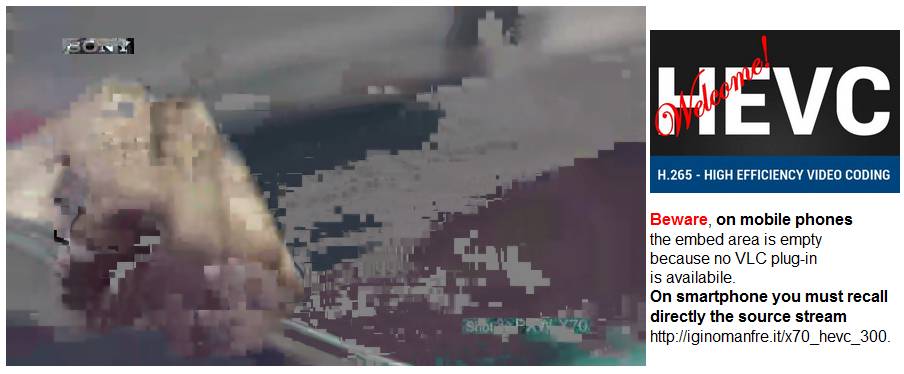I wrote this post three months later the former ones in which I published two embedded HEVC videos.
HEVC quality is asthonishing (take a look to my 300 kbps SD video), and any enhancement is welcome.
Yes, because the entropy reduction of the HEVC is so high that any small impulsive bottleneck in ip distribution pipe may destroy a plenty of unreplaceable information, affecting a many coding units in their slices and/or tiles grouping.
In terms of viewing it means a gray/green stripes across the screen, and the probability of this increases at the size and the framerate increasing.
My samples are basic: a small 360p30 and a bigger 720p30 , but HEVC will reach 8k at high refresh rate (up to 300 Hz, because - in order to avoid sliding - increasing the size requires a faster frame speed).
This can be recovered copying the segments to the clients (as it happens in ordinary HLS streaming or DASH) but it makes mandatory the usage of FEC (Forward Error Correction) in unidirectional streaming such as plain UDP or satellite broadcasting.
This FEC can vanishes a lot of compression savings and require a delay.
So, the delay up to a couple of seconds between DTT and HLS delivery will be required still in the future.

In broadcasting HEVC has been long awaited as the solution for bandwidth crowding, to deliver more HD channels with the SD bandwidth.
But the above mentioned more complexity imply the replacement/introduction of the decoder because the former one do not perform HEVC decoding in realtime or at all.
This could not be a problem in proprietary or brand new delivery platform (such as pay-tv) but at a cost for the broadcaster or for the consumer.
And - we know - in these times of crysis, savings more than long RoI (Return of Investment) expenses are welcome...
Despite Mr. Draghi is printing money almost free, there is not a plenty of money to invest...
In free to air delivery, satellite or DTT, HEVC will not be adopted easily because it could affect the share: the greater part of the receiver are still limited to SD MPEG2 decoding.
So, who will pay? I would not be negative, so I refrain to continue....
In any case, as the story should teach us, nothing else than a standard can find a wide market success: see the rise and fall of all non-standard (proprietary) compression schemes, even last Microsoft VCx or Google VPx.
As usual a plenty of studies has been done and will be carried out (e.g. this comparison between HEVC, VP9 and AVC, but all the honest and independent professional operators will choose nothing, absolutely nothing else than a standard.
back